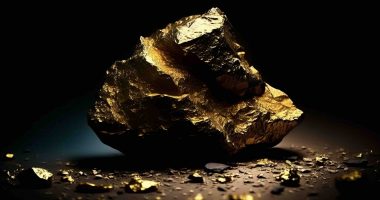- Chalice Gold Mines (CHN) has received results from its second target at the Julimar Project in Western Australia
- The project is targeting nickel, copper and platinum group elements (PGE) with a new reverse circulation drilling program
- So far, the second drilling hole has intersected a sequence of intrusive mafic to ultramafic rock-types with five per cent dispersed sulphides
- However, no massive sulphides and no significant nickel and copper mineralisation was found
- Despite being up more than 90 per cent yesterday, Chalice has dropped 17.1 per cent on the market today to trade for 31.5 cents
Chalice Gold Mines (CHN) has received results from its second target at the Julimar Nickel-Copper-PGE Project in Western Australia.
Chalice recently began a reverse circulation (RC) drilling program at Julimar to test several high-conductance moving-loop electromagnetic (MLEM) targets that were identified late last year.
The company concluded that these targets appeared to be associated with a lens-shaped magnetic anomaly.
Just yesterday the company reported its second drill hole, JRC002, is in progress at a depth of 184 metres.
This second hole is being drilled to test a second target, MLEM Conductor ‘A’, which is located north-east from the magnetic anomaly.
Conductor ‘A’ is a separate and distinct MLEM conductor which is believed to be in a different position to the conductor tested by JRC001.
JRC001 was drilled to test MLEM Conductor ‘E’ which is located south-west of the magnetic anomaly.
It returned a significant intersection of 19 metres at 2.59 per cent nickel, 1.04 per cent copper, 8.37g/t palladium and 1.11g/t platinum from 48 metres.
So far, JRC002 has intersected a sequence of intrusive mafic to ultramafic rock-types with five per cent dispersed sulphides from 87 to 241 metres.
Sulphidic sediments containing semi-massive pyrite were intersected from 241 metres and continued to the end of hole depth of 280 metres.
Chalice believes that this zone likely explains the presence of Conductor ‘A’.
No massive sulphides were intersected in JRC002 and no significant nickel and copper mineralisation has been detected from portable X-ray Fluorescence (pXRF) analysis of the RC samples.
Laboratory assays, including those for platinum group elements, remain pending.
“The first drill hole was a hard act to follow. Preliminary results for the second hole, whilst nothing like the first hole, suggest potential additional zones of mineralisation exist at Julimar,” Managing Director Alex Dorsch commented.
“Given it is early days at Julimar and acknowledging how difficult magmatic sulphide targets can be to drill, this will not be our last drill hole which does not intersect significant mineralisation,” Alex said.
“However, we remain excited about the zone discovered in the first hole, as well as the other high-priority EM targets,” he added.
Chalice will now drill the high priority MLEM Conductors ‘B’ and ‘C’ over the coming weeks. Step-out drilling at Conductor ‘E’ will begin shortly after.
Despite being up more than 90 per cent yesterday, Chalice has dropped 17.1 per cent today to trade for 31.5 cents at 11:28 am AEDT.







